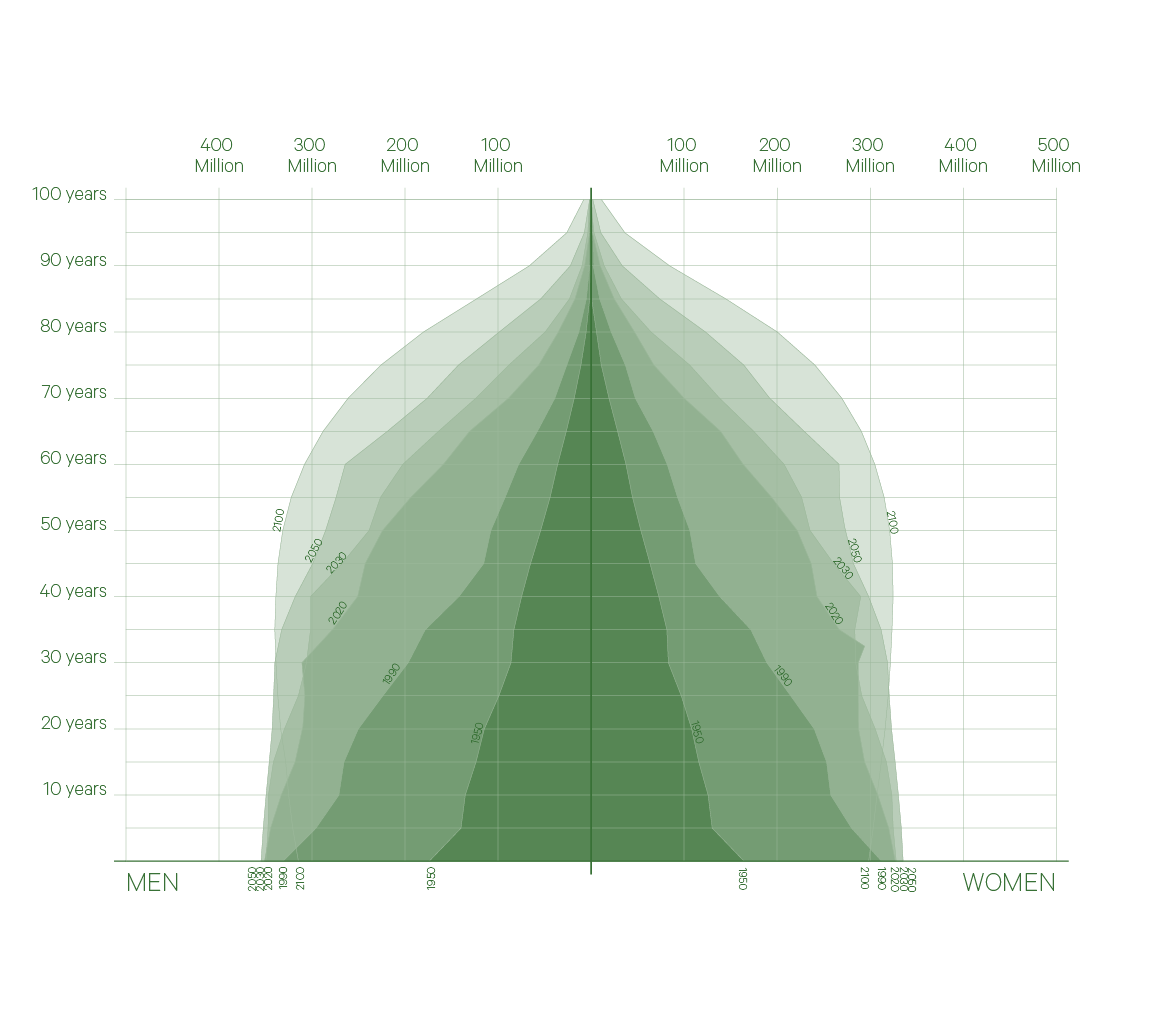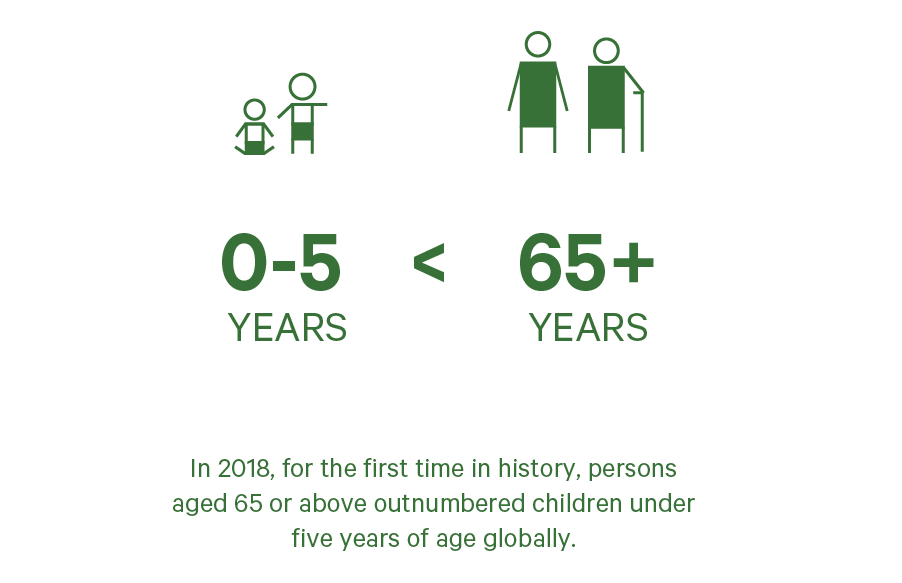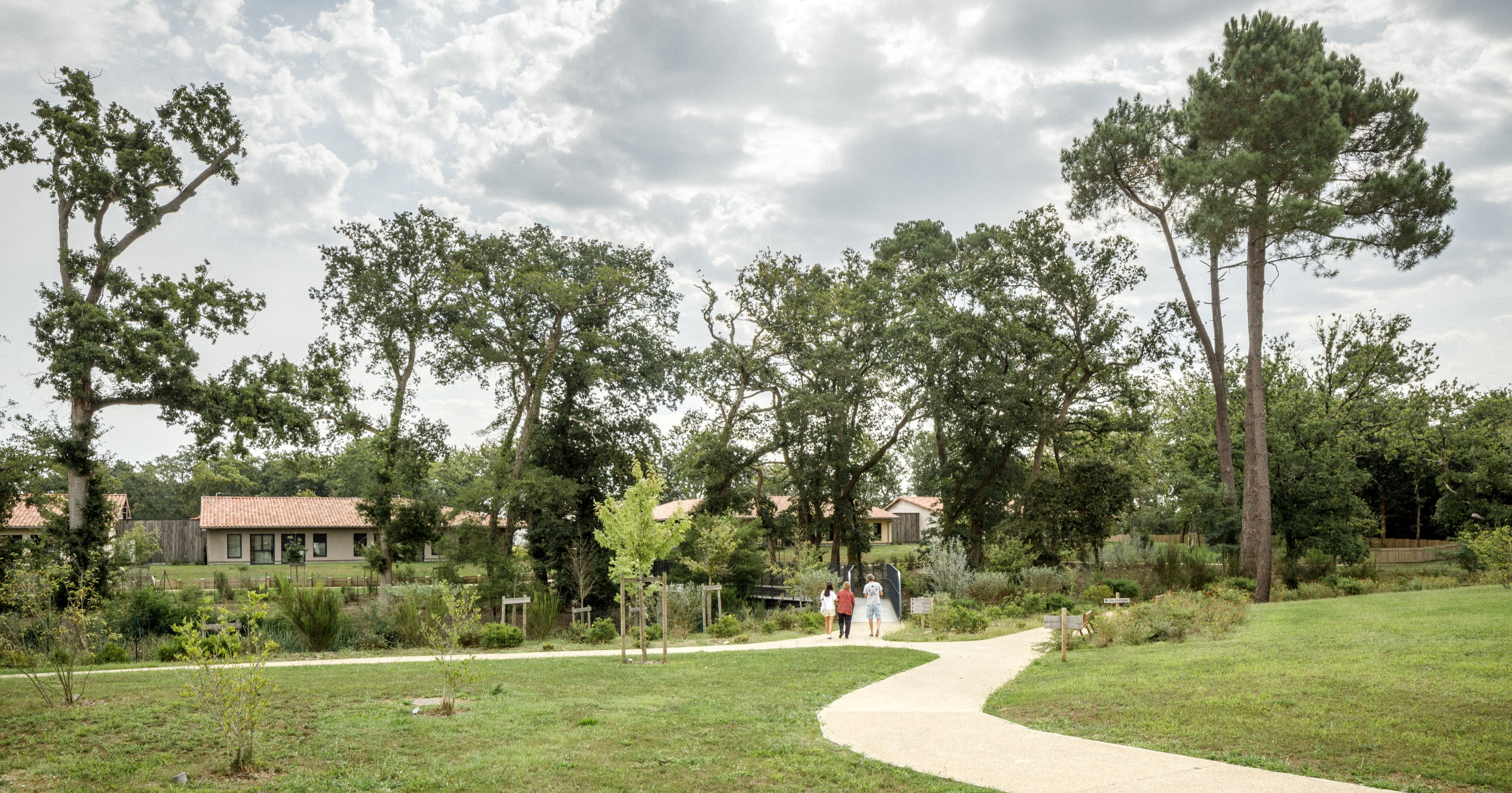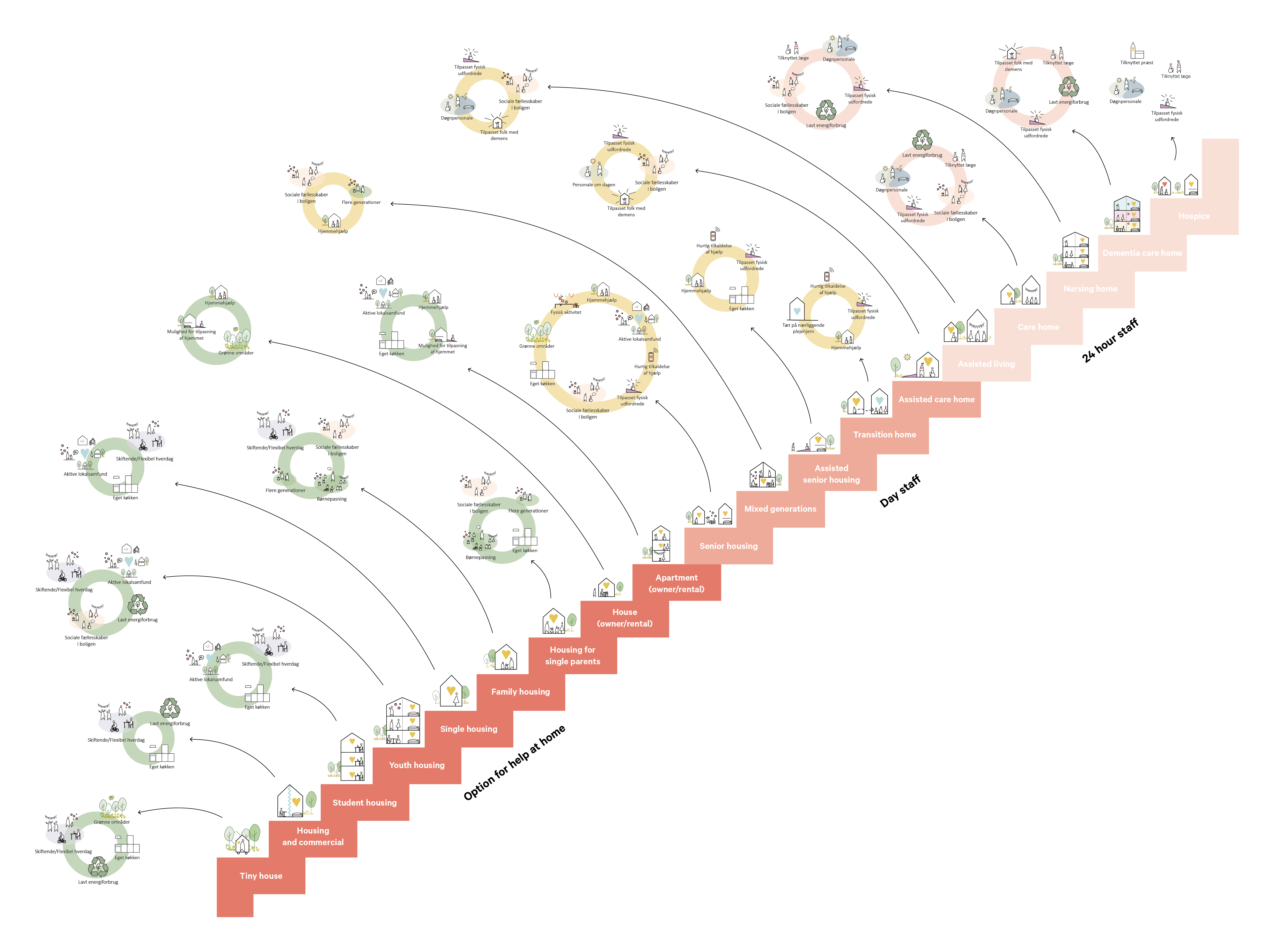Projections indicate that the number of people over 80 years of age will increase from just under 291.500 in 2022 to over 246.200 in 2030 in Denmark.

The demographic crisis can be addressed through age-integrated neighborhoods. NORD has developed the Healthy Ageing Ladder tool as a means to develop neighborhoods with housing for all ages and life stages.

We have three solutions for rethinking welfare architecture and ensuring quality of life for the growing group of seniors in age-integrated cities.

The welfare system is an interconnected system that requires collaboration across different sectors. In order to develop new care facilities, we must mobilise new innovative forces that can unite state, regions, municipal, public, private and civil sectors.
This way, we can bring about changes in the welfare system across sectors and ensure that the changes are sustainable measures in the long term. In our view, this is a starting point for improving welfare architecture.
As a society, we can become even better at innovating within public welfare services and the physical environments we create around them.
During the last 20 years, NORD Architects has advised, designed, and built innovative healthcare and care facilities as well as age-integrated urban areas in several countries.
We have learned how the same universal challenges are addressed differently in terms of legislation, prioritization and cultural approach. But it’s common to all that this is a task that neither the public, private nor the civil sector can handle alone.
We need to mobilise innovative forces that will transform the systemic aspects across sectors while ensuring that the changes are also embedded, enabling us to create sustainable and long-lasting initiatives that meet future needs. It is evident that new alliances need to be formed among the three sectors to create a genuine ‘collective impact’ with a shared focus on Healthy Ageing.
It is our experience that collaborations between the public sector, private sector, and the civil society can elevate the quality of welfare services in terms of treatment, care, and well-being for both staff, relatives and users.
The Centre for Cancer and Health in Nørrebro, Copenhagen, Denmark, is an example of cross-sector thinking that has paved the way for a new typology within healthcare building and design, with significant societal and human success. The centre was designed through co-creation between the City of Copenhagen as the client and operator, Danish Cancer Society as a private and independent part and 50-70 volunteers who represent civil society.
This project, in terms of planning, development, and architecture, has shown new ways to achieve quality improvement – in cancer counseling, quality of life, and socioeconomic aspects.
The demographic crisis can be addressed through age-integrated neighborhoods. NORD Architects has developed the ‘The Healthy Ageing Ladder’ as tool for improving neighborhoods with housing for all ages and life stages. The tool can be used as an analysis and programming tool when working with health-promoting urban development, planning housing for future seniors, and relieving welfare architecture.
Focusing on cohesion, community, and relationships instead of separation, silos, and isolation, will enable urban planners to achieve much healthier living environments that are both caring and inspiring. This requires new strategies and perspectives on welfare architecture, where shared use and coexistence are pivotal. In several of NORD’s health projects and dementia villages, the buildings and functions are aligned with the local communities to create inclusive architecture.
The Healthy Ageing Ladder is a tool for developing greater diversity in housing typologies and improving quality of life for future seniors.

We create vibrant cities when we mix functions, typologies, and institutions and focus our attention on coexistence among all elements of the city and the different residents. The mix of people and functions can be both a sign of health and health-promoting in itself. However, it will require formulating programs, planning across sectors and administrations in the early stages and viewing diversity as a valuable investment.
In the project Community for Life in Odense, Denmark, we have planned a nursing home centrally within a modern housing complex, so that the elderly, young people, seniors, children and adults are close to each other and can assist with everything from shopping, childcare, cooking, and communal dinning. The connection and contact between the ‘dementia village’ and local area were also prioritised in the design of France’s first dementia village, Alzheimer’s Village Dax – as well as in Furuset Hageby in Oslo.
We need to develop housing and welfare institutions that are adjusted to the demographics so that everyone can have age-appropriate housing.
The growing aging population requires increased focus on how we can stay in our own homes for longer, how we can live together in new types of communities, and how we can reside as our cognitive and physical conditions deteriorate.
There is a shortage of various types of housing for the elderly, and at the same time, the current way of establishing nursing homes, care homes, and assisted living facilities is not sustainable – environmentally, economically, or socially. Society also cannot afford to establish specialized institutions to the extent that will be necessary in the future.
Therefore, there is a need for innovation and design of new types of senior housing, healthcare buildings, and assisted living facilities in Denmark, so we can be ahead of the demographic changes.
We believe that the right physical environments and architectural elements, spaces, functions, and material qualities can not only support health functions, but also enhance the quality of life, well-being, and health in the environments we inhabit. Health needs to be made sustainable in the broadest sense, address our welfare challenges and create vibrant and diverse communities in both urban and rural areas.
Future nursing homes and care institutions will become more specialized to better support the needs of the elderly. The number of dementia patients will grow due to the ageing population, making it increasingly important that we build healthy and sustainable buildings for individuals with various cognitive and physical abilities into healthy and sustainable buildings.